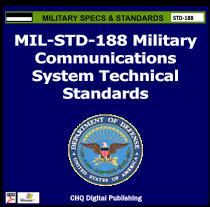In reliability theory and reliability engineering, the term availability has the following meanings:
The design life of a component or product is the period of time during which the item is expected by its designers to work within its specified parameters; in other words, the life expectancy of the item. It is the length of time between placement into service of a single item and that item's onset of wearout.
A product's service life is its period of use in service. It has been defined as "a product's total life in use from the point of sale to the point of discard" and distinguished from replacement life,"the period after which the initial purchaser returns to the shop for a replacement." Determining a product´s expected service life as part of business policy involves using tools and calculations from maintainability and reliability analysis. Service life represents a commitment made by the item's manufacturer and is usually specified as a median. It is the time that any manufactured item can be expected to be 'serviceable' or supported by its manufacturer.
A service-level agreement (SLA) is a commitment between a service provider and a client. Particular aspects of the service – quality, availability, responsibilities – are agreed between the service provider and the service user. The most common component of SLA is that the services should be provided to the customer as agreed upon in the contract. As an example, Internet service providers and telcos will commonly include service level agreements within the terms of their contracts with customers to define the level(s) of service being sold in plain language terms. In this case the SLA will typically have a technical definition in mean time between failures (MTBF), mean time to repair or mean time to recovery (MTTR); identifying which party is responsible for reporting faults or paying fees; responsibility for various data rates; throughput; jitter; or similar measurable details.
Annualized failure rate (AFR) gives the estimated probability that a device or component will fail during a full year of use. It is a relation between the mean time between failure (MTBF) and the hours that a number of devices are run per year. AFR is estimated from a sample of like components—AFR and MTBF as given by vendors are population statistics that can not predict the behaviour of an individual unit.
Failure rate is the frequency with which an engineered system or component fails, expressed in failures per unit of time. It is often denoted by the Greek letter λ (lambda) and is highly used in reliability engineering.
Reliability engineering is a sub-discipline of systems engineering that emphasizes dependability in the lifecycle management of a product. Dependability, or reliability, describes the ability of a system or component to function under stated conditions for a specified period of time. Reliability is closely related to availability, which is typically described as the ability of a component or system to function at a specified moment or interval of time.
Maintenance-free operating period (MFOP) is an alternative measure of performance to the mean time between failures (MTBF), defined as the time period during which a device will be able to perform each of its intended functions, requiring only a minimal degree of maintenance. It was originally proposed in 1996 by the United Kingdom's Ministry of Defence, with intended application to military aircraft.

A hard disk drive failure occurs when a hard disk drive malfunctions and the stored information cannot be accessed with a properly configured computer.
Fides (Latin: trust) is a guide allowing estimated reliability calculation for electronic components and systems. The reliability prediction is generally expressed in FIT (number of failures for 109 hours) or MTBF (Mean Time Between Failures). This guide provides reliability data for RAMS (Reliability, Availability, Maintainability, Safety) studies.
Emerson Electric's AN/APQ-159 was an I band/J band radar designed to upgrade Emerson's simple AN/APQ-153 used in the Northrop F-5. It offered roughly double the range, increased off-boresight tracking angles, and considerably improved reliability. Originally intended to be replaced by the further improved AN/APQ-167, modernized F-5s have typically moved to the entirely new AN/APG-69 instead.
A prediction of reliability is an important element in the process of selecting equipment for use by telecommunications service providers and other buyers of electronic equipment, and it is essential during the design stage of engineering systems life cycle. Reliability is a measure of the frequency of equipment failures as a function of time. Reliability has a major impact on maintenance and repair costs and on the continuity of service.
The survival function is a function that gives the probability that a patient, device, or other object of interest will survive beyond any given specified time.
Time multiplexed optical shutter (TMOS) is a flat panel display technology developed, patented and commercialized by Uni-Pixel Displays, Inc. TMOS is based on the principles of total internal reflection (TIR), frustration of TIR (FTIR) and field sequential colour generation (FSC). This combination of features make it suitable for applications such as mobile phones, televisions and signalling systems.
Availability is the probability that a system will work as required when required during the period of a mission. The mission could be the 18-hour span of an aircraft flight. The mission period could also be the 3 to 15-month span of a military deployment. Availability includes non-operational periods associated with reliability, maintenance, and logistics.
Maintenance Philosophy is the mix of strategies that ensure an item works as expected when needed.
Software reliability testing is a field of software testing that relates to testing a software's ability to function, given environmental conditions, for a particular amount of time. Software reliability testing helps discover many problems in the software design and functionality.
Mean Time to Dangerous Failure. In a safety system MTTFD is the portion of failure modes that can lead to failures that may result in hazards to personnel, environment or equipment.




